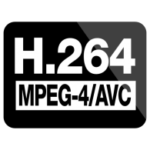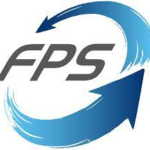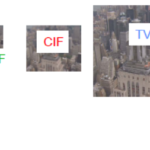This page was inspired by the paper “An Enhanced Detection Algorithm for All-Zero Blocks in H.264 Video Coding”, by Chung-Yen Su.
There are two approaches in development of early-skip methods:
- necessary skip conditions – if the condition A is met for a block then after transformation and quantization this block is necessarily zero
- highly likely skip conditions – if the condition B is met for a block then after transformation and quantization this block is highly likely zero
If the first approach is implemented in an encoder there is no impact on visual quality, only the encoding speed boosts (or increases).
However, if you realize the second approach in your early-skip mechanism then there is a penalty in visual quality (due to false positives, if a block is mistakenly considered as skipped), although the encoding speed boosts too.
In this page i consider only methods of the first approach.
The basic idea of AZB (All-Zero Block) is to find methods for early and reliable detection of AZB in order to skip unnecessary transformation and quantization (and inverse transform where needed) and consequently to boost the encoding speed.
It’s worth mentioning that all methods explained below are sufficient methods (i.e. belonging to the first approach). In other words if corresponding conditions are met then the current block is AZB with necessity (no false detentions). Each early AZB detection method of the second approach is always traded between the complexity and the percentage of non-detected AZB.
i outline only two AZB detection methods (both belongs to the first approach): Sousa and Wang methods. These two methods are relevant for 4×4 blocks only.
Sousa’s Method
Let for 4×4 residual block X the following inequality, (S.1) is held then this block is AZB (i.e. all coefficients are zero after quantization):

(S.1)
where:
- f is rounding factor. Notice that in the JM reference model software, f = 2qbits/6 for inter blocks or 2qbits/3 for intra blocks ( qbits = 15 + QP/6 )
- M is the following 6×3 matrix :

Note: If f is adaptively determined we have to assign the maximal possible magnitude of f in the formula (S.1).
Wang’s Method
Let for 4×4 residual block X the following inequality is held then this block is AZB:

Where G is the largest squared Euclidean norm of the rows of transformation matrix C:

For H.264/AVC 4×4 transformation matrix C, G = 10.
Conclusion:
We described sufficient methods of AZB detection. Each of the above methods misses some percent of real AZBs. Due to lack of false alarms no impact on quality is expected, only the encoding speed can be boosted.
Methods of the second approach give higher AZB detection rates but on contrary they have greater percentage of false alarms (i.e. there is a probability that a block is detected as AZB but it actually is not AZB). Consequently AZB false alarms inevitable impact on video quality.

23+ years’ programming and theoretical experience in the computer science fields such as video compression, media streaming and artificial intelligence (co-author of several papers and patents).
the author is looking for new job, my resume







Hi my friend! I want to say that this post is amazing, great written and come with approximately all important infos. I’d like to peer extra posts like this.
Wow that was unusual. I just wrote an really long comment but after I clicked submit my comment didn’t appear. Grrrr… well I’m not writing all that over again. Anyhow, just wanted to say wonderful blog!
Thanx for the effort, keep up the good work Great work, I am going to start a small Blog Engine course work using your site I hope you enjoy blogging with the popular BlogEngine.net.Thethoughts you express are really awesome. Hope you will right some more posts.
What i do not understood is in truth how you are no longer actually a lot more smartly-favored than you might be now. You are very intelligent. You realize therefore significantly on the subject of this matter, made me personally imagine it from numerous varied angles. Its like men and women don’t seem to be involved until it’s something to do with Girl gaga! Your personal stuffs great. At all times care for it up!
I’ve been browsing online more than three hours nowadays, but I by no means found any fascinating article like yours. It is lovely worth sufficient for me. In my opinion, if all website owners and bloggers made good content material as you did, the internet might be a lot more useful than ever before. “Nothing will come of nothing.” by William Shakespeare.
This really answered my problem, thank you!
I real glad to find this website on bing, just what I was searching for : D besides saved to fav.
It’s a shame you don’t have a donate button! I’d most certainly donate to this fantastic blog! I guess for now i’ll settle for bookmarking and adding your RSS feed to my Google account. I look forward to fresh updates and will share this site with my Facebook group. Chat soon!
Thanks a lot for sharing this with all of us you really understand what you’re talking about! Bookmarked. Please also consult with my web site =). We can have a link change agreement among us!
I think this web site has very good composed articles content.